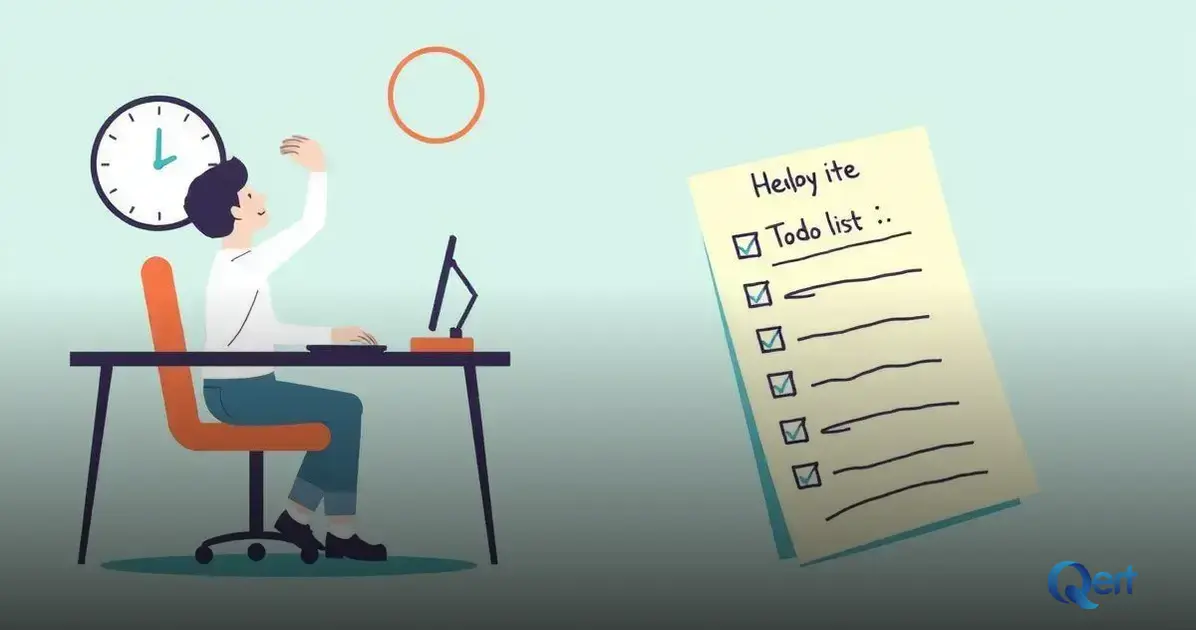ADVERTISEMENT
Work-life balance is crucial for maintaining mental health and productivity in our fast-paced world.
People often struggle to juggle their personal and professional lives, leading to stress and burnout.
In this article, we will uncover the key components of work-life balance, explore its benefits, and identify strategies that can help you achieve harmony between work and personal life.
Understanding Work-Life Balance
Understanding work-life balance is essential for everyone. It means finding a healthy mix of work duties and personal time. When people talk about work-life balance, they refer to how much time you spend working and how much you spend enjoying life outside of work.
Having a good work-life balance helps reduce stress and boosts happiness. When you feel balanced, you perform better at work and have more fun at home. It is important to know your limits and prioritize what matters most to you in both areas.
Many people struggle with work-life balance, especially with the demands of modern life. By understanding what this balance looks like, you can create a plan that fits your lifestyle. Simple changes like setting boundaries and scheduling personal time can make a big difference.
Benefits of Achieving Work-Life Balance
Achieving work-life balance brings many benefits. First, it helps reduce stress. When people find time for both work and personal activities, they feel more relaxed and happy. This balance allows individuals to recharge, preventing burnout and keeping motivation high.
Another key benefit of work-life balance is improved productivity. When employees are happy and stress-free, they tend to work more efficiently. They can focus better on tasks and complete them faster, leading to better performance and job satisfaction.
Lastly, achieving work-life balance leads to healthier relationships. Spending quality time with family and friends strengthens bonds and increases happiness. With more time for loved ones, people find joy outside of work, which can also positively influence their work life.
Effective Strategies

One effective strategy for achieving work-life balance is setting clear boundaries. Decide when your workday starts and ends, and stick to those times. This helps you separate work activities from personal time. When you finish your work, switch off emails and focus on your home life, allowing yourself to relax and recharge.
Another great approach is to prioritize your tasks. Make a list of what needs to be done each day and rank them by importance. Focus on high-priority tasks first and set realistic goals. By managing your time effectively, you can reduce pressure and create space for leisure activities and family time.
Finally, incorporating breaks into your day is crucial. Short, regular breaks can improve your focus and energy levels. Spend a few minutes stretching, walking, or simply breathing deeply. These moments help clear your mind and boost productivity, allowing you to enjoy both work and personal moments better.
Common Challenges
One common challenge in maintaining work-life balance is overcommitment. People often struggle to say no to additional tasks or responsibilities at work and home. This can lead to feeling overwhelmed and stressed, making it hard to enjoy personal time. Learning to set boundaries is essential to avoid taking on too much.
Another challenge is the increasing use of technology. With smartphones and emails, work can follow you everywhere. Many find it difficult to disconnect after hours. This constant connection can blur the lines between work and personal life, making it hard to fully relax and recharge.
Finally, lack of support can hinder efforts to maintain work-life balance. Whether at home or work, the absence of understanding from family or colleagues can make it tough to prioritize self-care. Open communication about needs and expectations is critical for finding a balance that works for everyone.
Tools and Resources for Work-Life Balance
One important tool for achieving work-life balance is a planner or calendar. Whether you prefer a digital app or a paper planner, keeping track of your tasks and appointments can help you stay organized. Scheduling personal time alongside work commitments ensures you make space for relaxation and family activities.
Another useful resource is time management applications. Apps like Trello or Todoist help break tasks into smaller, manageable parts. By setting deadlines and reminders, you can maintain focus and reduce feelings of being overwhelmed, which is key for a healthy work-life balance.
Finally, consider using mindfulness and wellness apps. Tools like Headspace or Calm offer guided meditations and breathing exercises. These resources can help you manage stress and improve your overall well-being, allowing you to enjoy both work and personal life more fully.
Setting Realistic Expectations
One key to achieving work-life balance is setting realistic expectations for yourself and others. Many people try to do too much in a short amount of time, which leads to frustration and fatigue. By understanding your limits and being honest about what you can handle, you avoid overloading your schedule.
Talk openly with your employer or team about your workload. If something is too much, ask for adjustments or extensions. In your personal life, communicate with family and friends about your availability. When people know what to expect, there’s less pressure on you to be everywhere at once.
Remember, it’s okay to say no. Protecting your time and energy is essential. Setting achievable goals and respecting your boundaries will help you build a routine that supports both productivity and peace of mind.
The Role of Employers in Supporting Balance
Employers play a crucial role in helping workers achieve work-life balance. Flexible work hours, remote options, and supportive policies can make a huge difference in employees’ lives. Companies that care about their teams’ well-being often see better performance and lower turnover rates.
Offering wellness programs, mental health days, or training on time management are examples of steps employers can take. Open communication and a culture of trust allow employees to speak up when they’re overwhelmed and need support.
When businesses value balance, it encourages workers to give their best while still having time for personal growth, rest, and family. This leads to healthier, happier, and more loyal employees.
Work-Life Balance for Remote Workers
For remote workers, maintaining work-life balance can be especially challenging. Without a clear separation between home and work, it’s easy for the two to blend together. That’s why it’s important to set up a dedicated workspace and stick to a consistent schedule.
Taking breaks, dressing for work, and having a shutdown routine at the end of the day can help reinforce boundaries. Avoid checking emails after hours unless absolutely necessary. This helps your mind transition from work mode to personal time.
Remote work offers flexibility, but it also demands discipline. With the right strategies, remote workers can enjoy both professional success and a fulfilling personal life.
Creating a Long-Term Balance Plan
Work-life balance isn’t a one-time fix — it’s an ongoing process. Creating a long-term plan helps you adapt to changes and stay aligned with your goals. Start by identifying your values and what matters most to you, both professionally and personally.
Set short-term and long-term goals that include time for hobbies, family, rest, and growth. Reevaluate your plan regularly and adjust it based on new challenges or responsibilities. Balance may look different depending on your stage of life or career, and that’s okay.
With intentional planning and regular reflection, you can build a life that supports success and satisfaction in all areas. A long-term vision gives you clarity, motivation, and the flexibility to stay on track.







